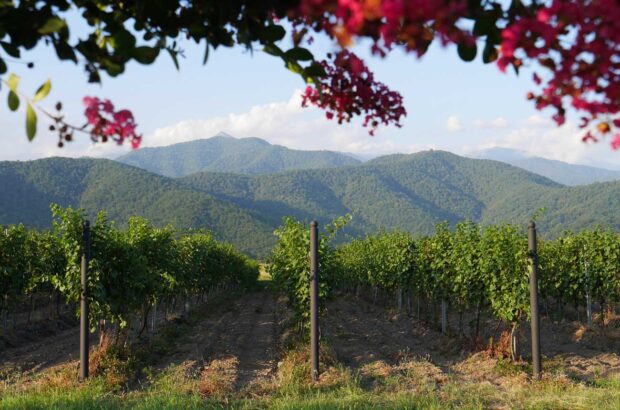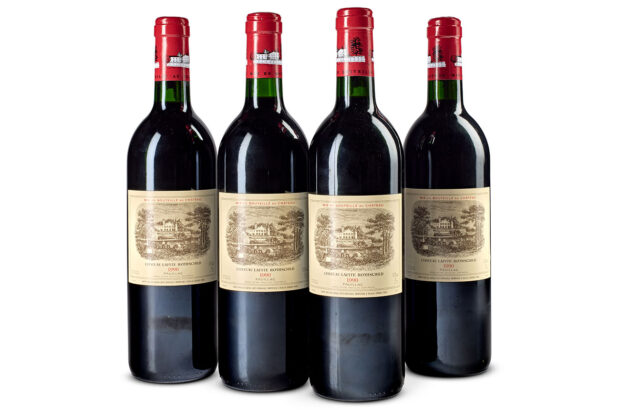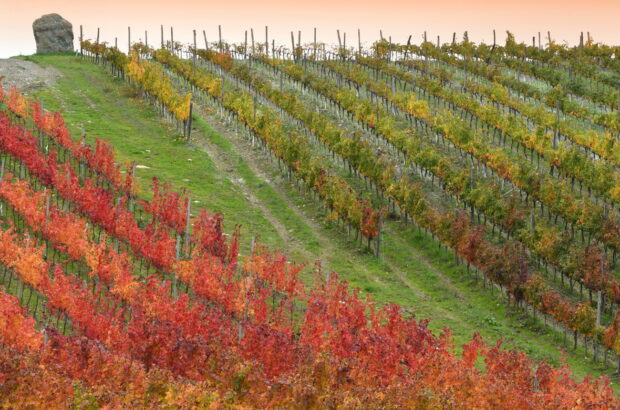Some places are just ‘drink towns’; synonymous with – even dominated by – the process of creating bottles known the world over. Bordeaux, Cognac and Porto are great examples; destinations on the bucket-list of anyone with an interest in what they drink. And if you have a shortlist of ‘potential drinks visits’, Sanlúcar de Barrameda should firmly be on it too.
If your reaction to this news is ‘eh?’, ‘why?’ or ‘where’s that?’ this is understandable. Because Sanlúcar is home to a drink style – Sherry – that has spent most of the last 30 years trying and failing to ‘do a gin’ and move from 1970s non-chic to 21st century icon.
Plus, it’s the home for a very specific style of Sherry: manzanilla, making it a niche within a niche. It doesn’t even give its name to the category – that honour goes to Jerez, 25km to the east. Unlike Port, Cognac and Bordeaux, there’s no ‘Sanlúcar’ section on a wine list.
So why visit?
Firstly, because this is where the whole pale dry style of Sherry originated; secondly because it’s a small town and the Sherry bodegas’ influence runs unmissably right through the heart of it; and thirdly because the combination of local food and local drink is the simplest and most joyfully harmonious you will find anywhere in the entire wine world. Fact.

Credit: juanorihuela / iStock / Getty Images Plus
If you’re surprised by the news that Sanlúcar (not Jerez) is the birthplace of pale dry Sherry styles, you need look no further than its coastal location for an explanation. Exposed to the Atlantic and more or less non-stop breezes, it’s cooler and more humid than inland Jerez.
Consequently, a few hundred years ago when barrels of white wine developed an accidental frothy layer of yeast, the conditions in Sanlúcar’s warehouses meant that it stayed there.
This ‘flor’ might have been unintentional, but the locals realised that it kept the wines super fresh, preventing them from oxidising, and also added interesting extra flavours.
Thus it was here, on the banks of the Guadalquivir river, that the pale dry style was born; manzanilla has to have been aged in barrel warehouses in Sanlúcar.
As for ‘niched’ – it dominates the domestic scene. Spain is Sherry’s biggest market, and roughly half of all those sales are manzanilla, according to the DO for Sherry.
Visit the town itself and you can see why. The drink is everywhere. Producers’ names jump out at you from billboards and signs, and restaurants are awash with the stuff. Bottles of manzanilla sit in ice-buckets at lunchtime, glasses drip tears of condensation in the Andalusian heat.
On restaurant wine lists, it’s no longer a small part of a hidden ‘fortified’ section, but a proud category in its own right. Manzanillas often outnumber reds and whites.
Walk through the old town – the Barrio Alto up near the medieval castle – and you’re bound to pass within a few metres of hidden barrels of manzanilla, stacked behind the high white walls.
Suddenly, manzanilla doesn’t feel like a niche within a niche; it feels like the only drink in town. And if you try it with the food you’ll see why.
Sanlúcar – at the confluence of the Guadalquivir river and the Atlantic – has some of the best (if not the best) seafood in the world; something which saw the town awarded Gastronomic Capital of Spain in 2022. The langostinos, in particular, are justifiably renowned.
The dishes in the bars and restaurants change daily depending on what the boats have brought in, and are, for the most part, simply prepared – a lot of deep-frying and not a lot of sauce. Chilled manzanilla – tangy, savoury, whistle-clean – is the perfect partner.
Its faint spritz of sea-salt echoes the platos, the surroundings and even the town’s maritime heritage. Was ever a drink so perfectly in tune with its surroundings?

Credit: Chris Losh
Sanlúcar de Barrameda is a small town with a population of around 68,000 people but draws a large number of visitors in the summer. In July and August it can be hard to find accommodation and it’s wise to book restaurants in advance. If you do visit in August, the horse racing along the beach is a spectacle that attracts national TV every year.
There are flights to Jerez – 25km away. But Seville has more, and is an easy 90-minute drive.
The streets of the old town – the Barrio Alto – are narrow, with tiny pavements that are not wheelchair friendly.
All the Sherry bodegas offer tours and tastings. Barbadillo’s stunning cathedral cellar is one of the world’s most striking barrel rooms. The producer also has a Manzanilla Museum. Bodegas Hidalgo La Gitana offers visits to the vineyards and a restaurant.
The Coto Doñana is a beautiful, unspoiled nature reserve across the Guadalquivir. It’s not possible to stay without a permit, but locals take the ferry for the day, attracted by the huge white-sand beaches. Just take lots of water and a hat.
Sanlúcar is the perfect size for a long-weekend getaway, merging culture, history, beach down-time and – of course – a stimulating and proudly-local food and drink scene. Your fridge will never be without manzanilla again.
Your Sanlúcar address book
Restaurants
Food and drink are closely intertwined in Sanlúcar de Barrameda. Most bars will offer tapas of some description, even if it’s just ham, cheese platters and a freshly-made seafood stew.
Much of the hospitality is focused around Plaza del Cabildo – both in the beautiful fountain and bougainvillea-filled square itself – and the maze of narrow streets around it. But for sheer concentration of venues go to the 200m strip of Bajo de Guía. Overlooking the white-sand beaches and the ferry to the Coto Doñana it’s a busy, buzzy, bacchanalian maelstrom of food, drinks and joyful socialising.
One of the busiest, buzziest eateries in the socialising hub that is the Plaza del Cabildo, queues stretch down the street at peak times as locals and tourists alike wait for its famous – and crunchily moreish – tortillas de camarones (shrimp fritters). It’s possible to eat at the bar, so if you’re in a hurry you can skip the queues, order a glass of manzanilla and get your food at the same time.
Bajo de Guia
Probably the food institution of Sanlúcar, Michelin-bibbed Casa Bigote has expanded over the seventy plus years of its existence, but continues to fill up its 150 covers sitting after sitting. It’s traditional, no-nonsense and gimmick-free Sanluqueño food that does nothing more than showcase quite beautifully the quality of the local ingredients. Its langostinos are legendary.

Casa Bigote. Credit: Chris Losh
Calle Caballeros
Elegant, modern Michelin-bib standard food from the excellent local chef José-Luis Tallafigo. It’s handily positioned on the same street as both the medieval castle and Bobedas Barbadillo in the Barrio Alto. The ten-course tasting menu is a bargain, with dishes of poise, creativity and imagination. With a dreamy interior Moorish courtyard and lots of local Sherry by the glass, it’s a must-visit.

El Espejo. Credit: Chris Losh
Bajo de Guia
One of the first restaurants on the strip at Bajo de Guía, Poma is a classic seafood restaurant with a huge variety of fish and seafood, cooked in a myriad of ways, though it’s best known for its arroz marinero – a heartily comforting seafood and rice stew. Thirty manzanillas (and no other types of Sherry!) are the biggest section on the wine list.

Poma. Credit: Chris Losh
Bars
Traditional Spanish bars have great ranges of manzanilla and traditional food, though their ‘cocktails’ aren’t likely to stretch much past a rebujito – manzanilla and lemonade – the town’s sangria-adjacent staple long drink for hot summer months.
Cocktail bars in Sanlúcar cater for locals and tourists looking for ‘hot weather’ drinks – Mojitos, Caipirinhas and Piña Coladas. Free-pour gin and tonics are traditionally drunk after dinner and can be ferociously strong.
Manzanilla’s savoury character pairs really well with gin, and it makes for a good alternative to vermouth in Martinis for those who like the more briny styles.
Bar Astillero
Bajo de Guia
‘La Vida Puede Esperar’ – Life can wait – says a sign in this bar at the far end of the venues lining the beaches of Bajo de Guia. Bright, airy and spacious, with its full-length windows and wooden decking, this former shipbuilders has been neatly renovated and feels more modern than most bars in Sanlúcar. Try the signature Astillero cocktail.
Bar Casa Pedro Hernández Santolalla
Calle Bolsa
A classic Spanish bar, with ham hanging from the ceiling and an L-shaped bar. It began life as a grocers in 1947, before becoming a tobacconists and then its current iteration. Simple, but good tapas and manzanilla literally on tap served straight from the barrel.
Ribera 22
Plaza del Cabildo
With its low beams and wooden floor, there’s an air of a smugglers den to this venue that sits in a prime location right on one corner of the buzzing Plaza del Cabildo. With a big range of whiskies and gins, it’s clear that the team takes its craft seriously. Bartender Manuel Hoang has created a whole range of twists on classic cocktails, cleverly substituting Sherry for the original base spirits.

Manuel Hoang at Ribera 22. Credit: Chris Losh
Calle Rubiños
Unpretentious and friendly, with a great range of manzanillas, since it opened in 1978, Taberna der Guerrita has justifiably gone on to be something of a Sanlúcar institution. Its tasting room with 300 listings has attracted passing winemakers from all over the world, and the five course wine and food tasting menu is well worth considering for the curious oenophile.






